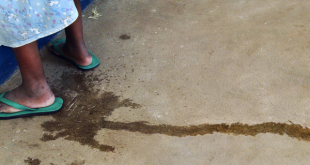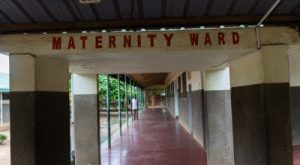
BY DANIEL BWAMBALE
KAMPALA: TUESDAY, MAY 31, 2022
At the height of the Cold War -1965 to 1975- TAZARA, a proposed 1,860 kilometers (km) railway from Dar-se-Salaam to Zambia was mooted.
Zambia, a landlocked country was so desperate to export its copper outside the links through Apartheid South Africa.
Presidents Julius Nyerere and Kenneth Kaunda, procrastinated for the longest time despite Chairman Mao’s advice and offer to construct the TAZARA, with Mao opining that the Chinese have different problems and can afford to build this railway whilst postponing construction of theirs!
The World Bank, the Japanese, West Germany, Britain, the USA and the same cast aligned to such interests stated that they wouldn’t provide financing.
Nyerere was so vexed that he told a British politician, Humphrey Berkeley, to tell Prime Minister Harold Wilson that the “Chinese were going full steam ahead with the project,” in a bid to try and get Western funding. Harold Wilson’s blithe reply? “The Chinese have not got the money to build the railway.”
African leaders have learnt the survival game and know the brutal, racist and murderous ruthlessness of the Western sphere and capital that they will delay a project given to them on a silver platter to get buy-in from this cast.
Let’s quote Kaunda on the occasion of the launch of construction works verbatim.
“Campaigning against the railway had been wide and intense. The railway would be uneconomic, it was argued. We refused to listen. The railway would be too expensive in relation to economic returns, we were advised. We rejected the advice. The railway would take too long to build, it was emphasized rather discouragingly. We ignored the warning. Above all, it was argued that Zambia did not need the railway after all as UDI with all its hardships to Zambia would end in a matter of months.” Dar-es-Salaam, 26 October 1970.
Tired of waiting, Kaunda signed the agreement in January 1970 and by October 1970, one of the most iconic projects, despite all the problems it has since experienced, got rolling and in 1975, was complete. The Americans, so incensed, sponsored a paved 2,400km highway, the TANZAM!
The history recap above is important, because it ties in neatly with another project that, ironically, involves that hardy country, Tanzania-the East African Crude Oil Pipeline (EACOP).
It has attracted a hysterically hypocritical cast of bankers, politicians, teenagers, woke activists that will trend jack anything, geo-political enemies seeking to stifle any good news coming out of Africa and ill informed “experts” on Africa.
Unlike the TAZARA, it is arguable that this is a wholly Western originated project that from every angle of any feasibility study, is wildly profitable.

So profitable it attracted TOTAL ENERGIES EP, one of the most lily white multi-national corporations. Tullow Oil, the wildcatters that discovered, alongside Ugandan geologist and petroleum experts, the commercially exploitable quantities of oil in the Albertine Graben are the best example of British people one could give in answer to a question at Eton as to who is a true Brit. There is a whole cast of fellows such as Schlumberger, McDermott, et al.
There was/is no excuse not to go ahead with this project even from the western lenses that has always seemingly argued against any serious capital investments in Africa. So, one had to be manufactured; environmental degradation, as we shall expound.
What is EACOP?
EACOP is a 1,443km electrically heated, underground pipeline that traverses Uganda and Tanzania starting at Hoima and terminating at Tanga Port.
The same right of way will be used to import liquefied natural gas into Uganda from the large gas fields of Tanzania to help mitigate against climate change effects and help stop the massive deforestation as a result of Uganda’s overwhelming dependence on wood fuel that would see it lose all its forest cover by 2045 if not checked.

EACOP is one of, if not the most carefully studied, in fact over studied projects of such nature. The result is an arcane amount of minutae that is widely available on the interwebs. All these details will seem to be insufficient for the green lobby hell-bent on keeping the project in purgatory.
Consider for instance the amount of detail provided in a small brief by Newplan ICS -a company contracted to help in compensation payments to Project Affected Persons- in describing parts of the project;
“Moving along the route: The export pipeline originates at the PS-1 located at the planned Kabaale Industrial Park, in Hoima District. Initially, it crosses relatively low terrain with undulating topography characterised by widespread cropland, settlement and transport infrastructure between Hoima and Mubende districts.
The corridor traverses through a modified section of Taala Central Forest Reserve (CFR) in Kyankwanzi District, and crosses near the eastern border of Kasana-Kasambya Forest Reserve in Mubende District, but does not enter this reserve. The pipeline corridor crosses Taala CFR between chainages KP 78+033 to KP 82+122.
There are watercourse crossings including the Kafu River between Hoima and Kakumiro Districts, Nabakazi River between Mubende and Gomba Districts, Katonga River between Gomba and Sembabule Districts, and Kibale and Jemakunya Rivers in Kyotera District.
The pipeline corridor traverses gently undulating grass and farmland, hills with open plateaus, open grassland, wetlands in Gomba and Sembabule Districts and a relatively flat land scape as it runs towards Mutukula in Kyotera District near the border with Tanzania. The corridor avoids the large local settlement of Mutukula at the border as it progresses into Tanzania.
On the approach to the Tanzania border, and the north-western corner of Lake Victoria, the corridor crosses a substantial zone of wetlands in a high average rainfall zone that is also characterized by almost unbroken crop land, a substantial proportion of which is under rice cultivation, cattle grazing land and settlement.”
The meaning of this description is that without stepping into Uganda, one has accurate picture of what EACOP is or entails.
What is Stop EACOP?
Everything about EACOP is unprecedented, bar the opposition, which as shown, is nothing new for a truly trans-formative project in Africa.
Stop EACOP can be described from resources on its website as a collection of climate change activists that have found a willing, some may say racist and prejudiced audience in Western Europe and North America to listen to hyperbole about a very small, very insignificant-at least, on a global scale- project, yet which has the greatest net positives of any oil and gas project in terms of influencing changes that help mitigate climate change.
Stop EACOP harps on about “ecologically sensitive zones” getting destroyed, decimated, and rendered unusable. They talk of cultural loss and displacement of people, but provide no alternative as to what an energy poor middle African country with one of the world’s largest population growth rates should do.
Led by carefully chosen, highly compensated brown and black faces with the real masters hiding in plain sight, they hypocritically hyperventilate, shouting and rudely thrusting their careful choreograph in Western capitals, with a practiced and paid for umbrage that would make most Hollywood Casting Directors blush in anticipation of new talent.
The hypocrisy
Stop EACOP state that for the 20 years of its service, the EACOP will generate 34 million tons of carbon emissions each year. That is 680 million tons in 20 years, less than France’s 3 year total of over 900 million tons taking a rate of 300 million plus tons of carbon emissions per year.
That 20 year tally is less than Germany’s yearly production of over 810 million tons of carbon emissions! The total population of France and Germany, Europe’s largest economies, is less than that of the East African Community, but have a higher carbon footprint by orders of magnitude.
This is the audience that believes that the EACOP is a danger to the world and “fragile ecological systems!” Basically, the message of Stop EACOP is that the rest of the world can go on, but Africans can as well become extinct and NEVER enjoy the fruits of their resources as long as “we are okay”.
Nowhere, not once, does Stop EACOP provide alternative approaches to the need for East Africa’s energy independence, manufacturing and construction jobs, and Foreign Direct Investments connected with the oil and gas sector, especially if their nefarious, racist campaign succeeds.
Vividly, the list of banks that are financing the North Sea Project developments in Britain, the largest Oil & Gas development in 25 years by the British, is the same cast of banks that ostensibly cannot finance EACOP!
In this same period, they have doled out large sums to the North Sea project. A moralistic cast that reads pretty nicely as Bank of America, Barclays, BNP Paribas, BPCE/Natixis, Citi, CréditAgricole, NatWest, Credit Suisse, Deutsche Bank, HSBC, ING Bank, Lloyds, Morgan Stanley, Banco Santander, SociétéGénérale, SpareBank 1 Markets, Standard Chartered and UBS, isn’t it? (See: https://www.clientearth.org/latest/latest-updates/news/north-sea-oil-field-development-shows-banks-hypocrisy-over-climate/ ).
What does EACOP mean for Uganda, Tanzania and East Africans?

EACOP has a very sound and best in class Environmental and Social Impact Assessment that is available to all, even on the website together with video and other evidence of mitigation and other measures.
The project expects to expire in under 25 years in line with the commercially available quantities of oil, as mining 78.84 million barrels a year (about 4 days consumption for the USA), will see us exhaust all 1.5 billion barrels in 20 years, assuming we transport all of it through the line (the Uganda government expects to build a 60,000bpd refinery in Hoima district by 2027).
One of the most bizarre videos or messages is that of a Ugandan lady campaigner. She states that her people will be damned by the EACOP. Who are her “people”? Are they the over 100,000 people expected to be employed at peak by this project? Are they the 100 million plus Ugandans and Tanzanians expected to gain in a windfall of over $15 billion in investments and more than $60 billion in revenue over 20 years? Are her people the soon to be 75 million Ugandans by the end of activities who need a reverse pipeline constructed along the same right of way as EACOP to meet their energy needs and transition from the disastrous use of wood fuel? Are they the 3,648 project affected persons whose compensation is the most transparent, highest by market value and disturbance allowance and sustainability training programs and most highly visible compensation process of any project in Africa? Is it desirable that her “people” continue cooking using firewood-which is running out in any case- and not transition to a clear-eyed, tuberculosis free future as the teenagers (majority of whom would not tell where Uganda is on a map) that were rallying on the cold streets of Paris? When would her people get to use an electric train or tram in this energy poor future she wants to consign them to?
Yet, you would never tell from the hysterically hypocritical stop EACOP (East African Crude Oil Pipeline) brigade’s fulminations when they confronted French President Macron and later “forced” (really, theft by trick or decision by trick tactics) Deustche Bank, a myriad of other Western Europe and North American concerns to withdraw not their support, but the POSSIBILITY of their support to financing this project.
Similar projects with environmental concerns and no hysteria
In comparison, the Kampala-Jinja expressway will displace over 3,000 people and pass an equally ecologically sensitive area including next o the world’s largest fresh water lake, Victoria and the world’s longest river, the Nile. There are literally hundreds of projects cleared through RAMSAR sites in Uganda or elsewhere in the world, because the net benefit far outweighs any concerns and mitigation measures are in place, anyway.
None of the above mentioned projects elicit the shrill, comprador elite backed, and shameless prejudice of the green lobby elite. Perhaps, the lack of opposition to some of these projects, it may be argued, is down to the fact that all these projects are not singularly trans-formative in scale, depth and breadth as the prospect of Middle Africa being energy independent and for the first time not being subject to the vagaries of asinine quarrels such as that in Ukraine.
East Africa shall have over 500 million people in the next 50 years. Their future is better assured by rapid transformation of their lives as a result of the spin off benefits of a petro-chemical industry.
Fertilizers, better tar for paved roads, lower prices for fuel and air travel, lower prices for cooking gas, better lit classrooms, governments affording healthcare for all, education for especially the vulnerable girl child, better peace and security mechanisms and a robust inter-country investment climate owing to the transnational nature of EACOP are all assured under a rapidly implemented, and environmentally friendly project as we have on our hands.
Stop EACOP calls TOTAL ENERGIES and other investors in EACOP, corporate colonialists! Even if that were true, on a balance of probabilities, their campaign is worse as it is rooted in deep seated white savior mentalities.
It is driven by the trope that Africa is incapable of planning a project of such magnitude with the best interest of its people in mind.
African leaders’ best gift to posterity is to ensure all effort is mobilized to ensure EACOP, the refinery and all associated trans-formative infrastructure, succeeds. And, that they learn their lessons and start mobilizing ways to strengthen local economies to enable domestic financing of such projects.

We should not allow to be the randomized control trial for some green voodoo as Europe opens up new pipelines and builds new rigs in ecologically sensitive areas.
If anything, the Structural Adjustment Programs and the racist hoarding of COVID-19 vaccines during the height of the pandemic should have taught us more than enough to always have a large bowl of salt nearby as some in the West march in “solidarity” with the downtrodden.
The beauty is, the Industrial and Commercial Bank of China doesn’t give a hoot, and, if anything, will do what it takes to spite the self-righteous hypocrites.
The Americans seem not to care, too, as Pouyanne, chairman and CEO of TOTAL ENERGIES, revealed in recent interviews. The other option is to raise an East Africa wide bond.
With a combined Broad Money supply M2 of, at least, $50 billion, a well-planned Petroleum Infrastructure Bond would easily accumulate and surpass $5 billion. Ethiopia already taught us how under the Grand Renaissance Dam Bond
The 78 day conundrum
Can we shut down the US economy for 78 days? The time the United States of America would take to consume all of Uganda’s commercially verified and exploitable crude oil.
Uganda will, at peak production, pump out only 216,000 (Two Hundred Sixteen Thousand) barrels of oil per day (bpd). The USA consumes 19 million bpd. It would take only 78 days to run through the 1.5 billion barrels of crude that are verified as commercially recoverable.
EACOP is a mere 1.443km where the USA has 2.6 million miles of pipeline! We can have a short 1,443km, surely.
Hypothetically, Stop EACOP is akin to saying the United States go for 78 days without any fossil generated fuel/energy.
The economic loss the USA would suffer is astronomical, but recoverable to a greater degree since they have enough capital to rapidly access other technologies, than what stopping EACOP would do to the environment, economy, political stability and fortunes of over 300 million soon to be 500 million human beings in Middle Africa.
We can fathom a balance between the exaggerated claims of Stop EACOP with a development that actually goes a long way in advancing and achieving the ideals of the climate change crowd. We cannot afford to lose a 78 day trade off with the West that costs us another century.
The writer is a Senior Principal Magistrate and Head of the Uganda Legal Information Institute (www.ulii.org)



